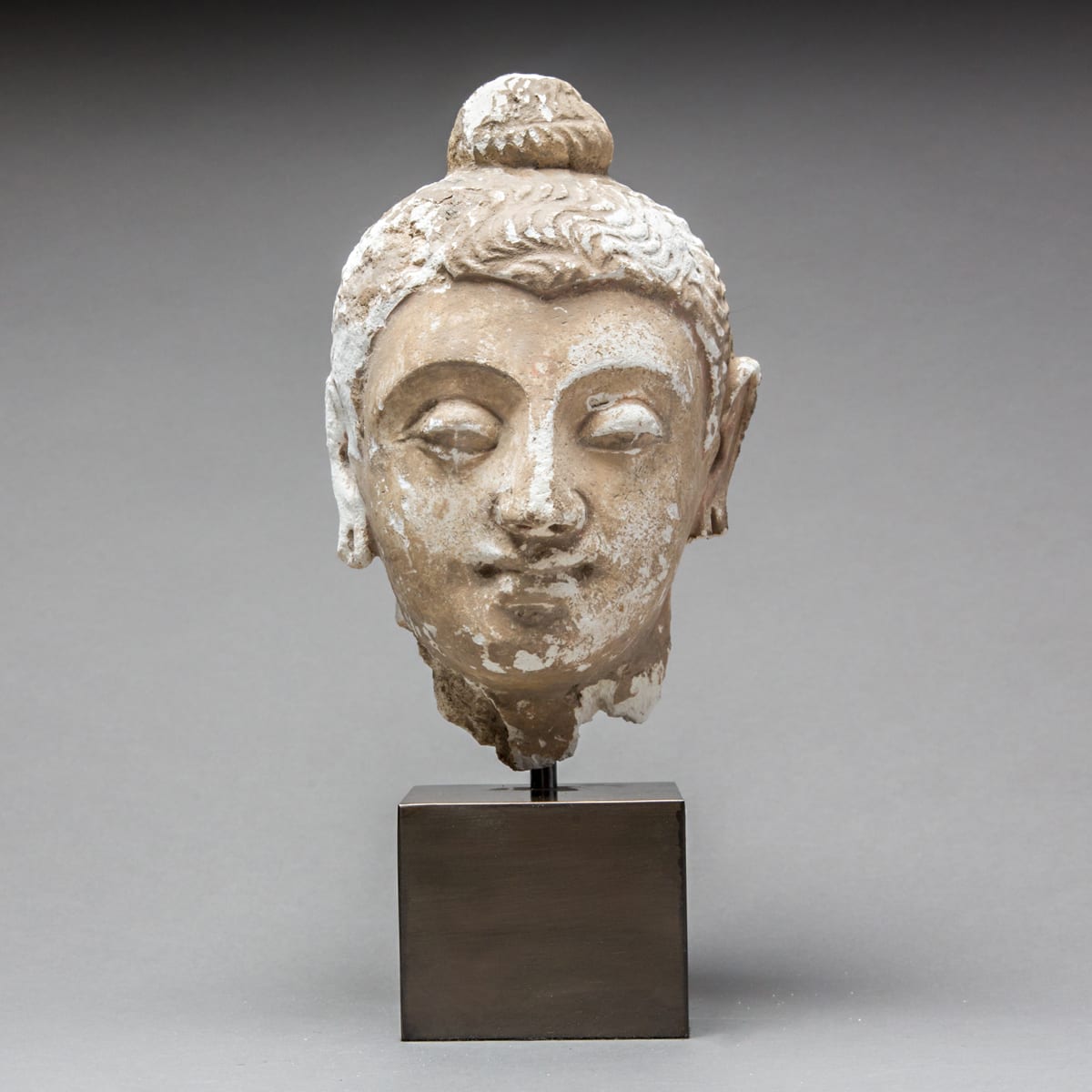Gandharan Stucco Buddha Head, 100 CE - 300 CE
Stucco
height 19.1 cm
height 7 1/2 in
height 7 1/2 in
AM.0216
Further images
According to tradition Buddhism was first introduced into the Gandharan region under the patronage of Asoka, emperor of the Mauryan dynasty, in the third century B.C. The first significant physical...
According to tradition Buddhism was first introduced into the Gandharan region under the patronage of Asoka, emperor of the Mauryan dynasty, in the third century B.C. The first significant physical remains to survive, including stupas and figurative sculpture, date from the first century B.C. Between c.100-400 A.D. sculptors working in schist, terracotta and stucco produced an astonishing number and variety of Buddhist images. Gandhara was situated at the crossroads between east and west and thus came under a wide variety of artistic influences including Persian, Greek and Indian. It also became an important pilgrimage site for Buddhists from across Asia as it was claimed that events from the Buddha’s former lives had occurred in the area.
This stucco head displays the Gandharan tendency to combine realism around the nose, mouth and cheek areas with deeply cut stylised eyes. Small traces of the original polychromy survive, for example remains of a red pigment in the earlobes and around the hair-line. Traces of black are also apparent in the curls of the hair. The hair is arranged in a top-knot. This was the Gandharan version of the ushnisha, a mound on the head which symbolised the Buddha’s spiritual wisdom. Traces of an urna, or third eye, are also just visible on the forehead, outlined in red. The bottom of both earlobes has been lost but it is still possible to make out their elongated form. This was a reference to the Buddha’s former wealth, symbolised by the effect of wearing heavy earrings. Despite small areas of loss, the serenity of the expression, partly created through the downcast eyes, has been preserved.
This stucco head displays the Gandharan tendency to combine realism around the nose, mouth and cheek areas with deeply cut stylised eyes. Small traces of the original polychromy survive, for example remains of a red pigment in the earlobes and around the hair-line. Traces of black are also apparent in the curls of the hair. The hair is arranged in a top-knot. This was the Gandharan version of the ushnisha, a mound on the head which symbolised the Buddha’s spiritual wisdom. Traces of an urna, or third eye, are also just visible on the forehead, outlined in red. The bottom of both earlobes has been lost but it is still possible to make out their elongated form. This was a reference to the Buddha’s former wealth, symbolised by the effect of wearing heavy earrings. Despite small areas of loss, the serenity of the expression, partly created through the downcast eyes, has been preserved.







